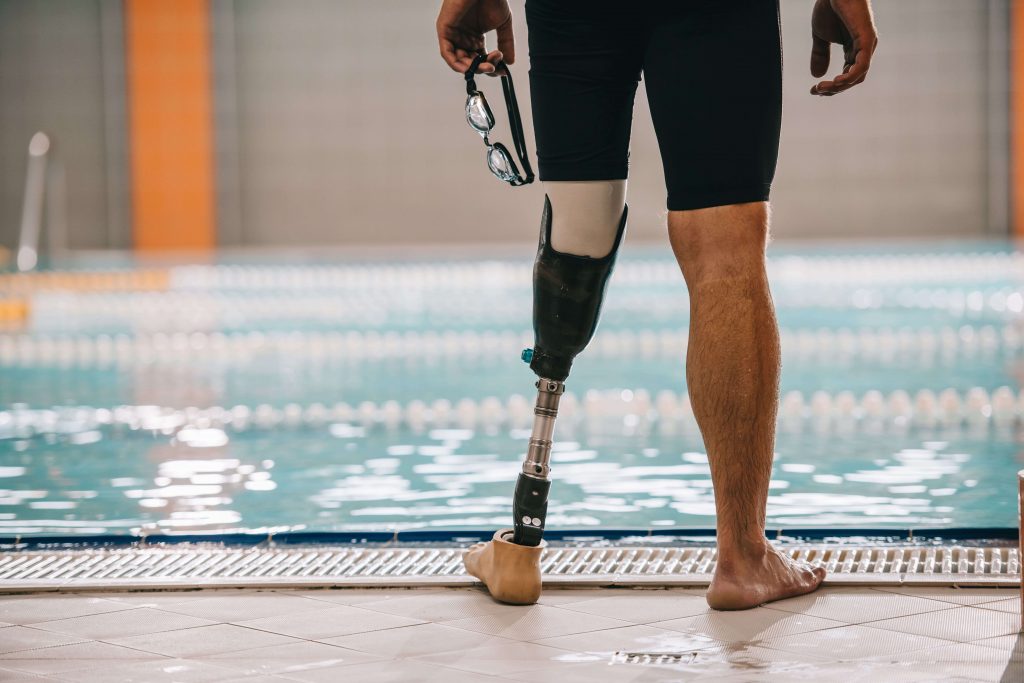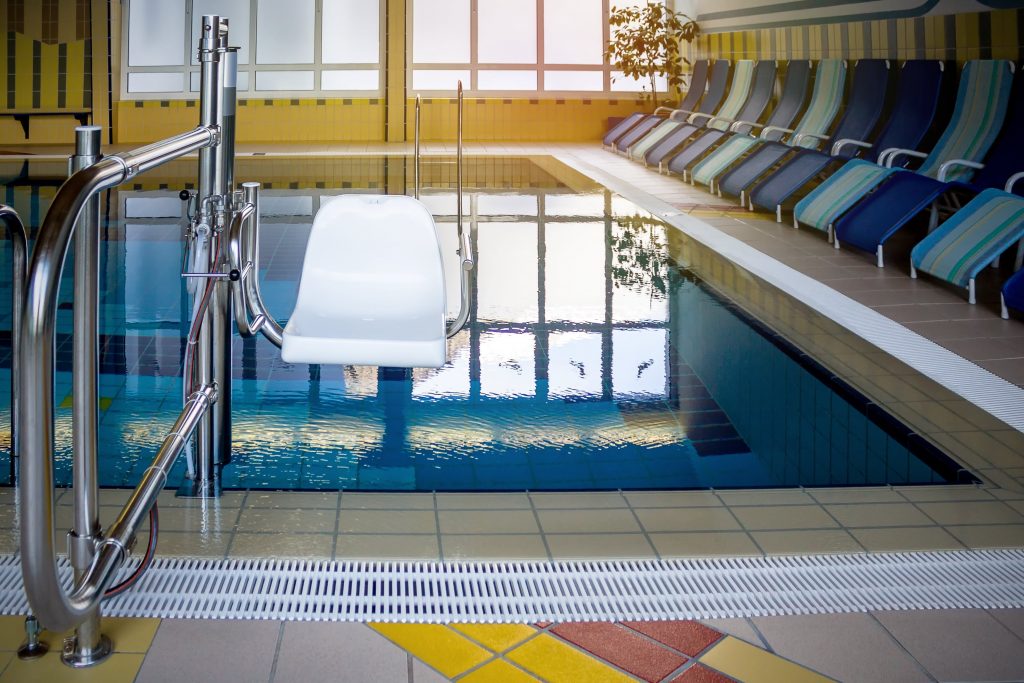Swimming with prosthetic limbs
Living without a limb doesn’t mean you have to give up the activities you love. Swimming is great exercise and many swimmers appreciate the feeling of freedom that moving through the water can provide. Swimming with a prosthetic limb can seem a bit daunting if you haven’t tried it before and there are a few points to consider before you take the plunge.
Are all prosthetic limbs safe to use in water?
Most prosthetic limbs are designed to be splash resistant, so they will suffer no damage from stepping in a puddle or other minor exposures. If, however, you submerge a regular prosthetic limb in water, there is likely to be damage to the working components, especially those that contain microprocessors, and any metal parts can rust. You should check whether your prosthetic limb is suitable for use in water before you try it.
If your prosthetic limb is not water-safe, there are a couple of low-cost options you might want to consider. You can use a specially designed waterproof cover. Covers will slip over the prosthesis and form a waterproof seal. Whilst this solution is simple, many swimmers find the cover too bulky and if the seal should break, water may damage the prosthetic.

Another low-cost option is to use an old prosthetic limb for swimming, knowing that it will deteriorate. This is often more comfortable but is of no use if you do not have an old prosthesis available. If the prosthesis was discarded because of poor fit, it won’t be much use for swimming as you’ll need to be comfortable.
Can I swim without a prosthetic limb?
Many people who are living with limb loss prefer to swim without a prosthesis. This is largely down to personal choice and physical considerations. If you need help transferring to the pool without your prosthetic limb, a wheelchair or crutches can help, although you should be aware that there are difficulties with both these options, especially if you’re on a beach.
If you can overcome the difficulties of getting into the water, swimming without a prosthesis is usually possible and can be beneficial for the health of your residual limb as well.
Can I get a special prosthetic limb for swimming?
There are a number of prosthetic limbs designed specifically for swimming. As well as shielding the moving components from water and using corrosive resistant materials, some also have extra traction on the foot, which makes getting into and out of the water on slippery surfaces much easier.
Bear in mind that, whilst a specialist swimming prosthetic will make it easier to get into and out of the water, you might find it more difficult to control the movement of the prosthesis in the water. Specialised prosthetic limbs don’t stop at swimming. You can also find prosthetic limbs designed for a number of different water sports, from surfing to diving.
Will I need to find an accessible pool?
Getting into and out of the pool, with or without a prosthetic limb can be problematic, so an accessible pool is definitely an easier option. Most newer public pools will have railings, lifts and, if you’re really lucky, zero threshold graduated entry. These adaptations make life a lot easier and it’s worth looking around for a pool that provides these. You’ll find that older pools tend to have only ladders, which can be difficult. If you’re swimming in the sea, you can find a few beaches that have been made accessible around the UK and many more around the world.

What does the future hold for swimmers with prosthetic limbs?
Advances are being made all the time which contribute to the design of prosthetic limbs specifically for swimming. The best design ideas come from those who understand the problems of swimming with a prosthetic limb. James Dyson Award runner up Stuart Baynes has designed a prosthesis which addresses the problem of the swimmers’ changed symmetry in the water and the problem of getting to the pool. He did this by enclosing the inner swimming fin in an outer casing. The outer casing provides stability when getting to the pool, but can be removed before entering. The swimming fin then provides stability in the water and helps the swimmer to swim in a straight line. Check it out here.
Getting back in the pool can seem a bit daunting, especially if you are living with recent limb loss. You might need to try different approaches to see what works for you, but the extra planning will be well worth it once you’re back in the water.

